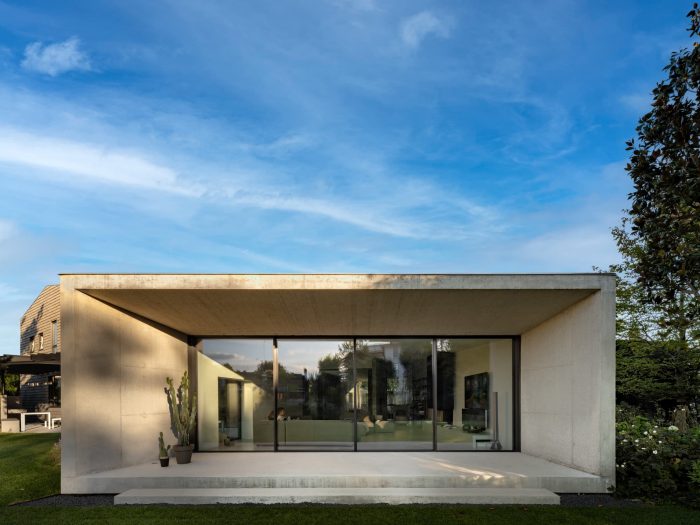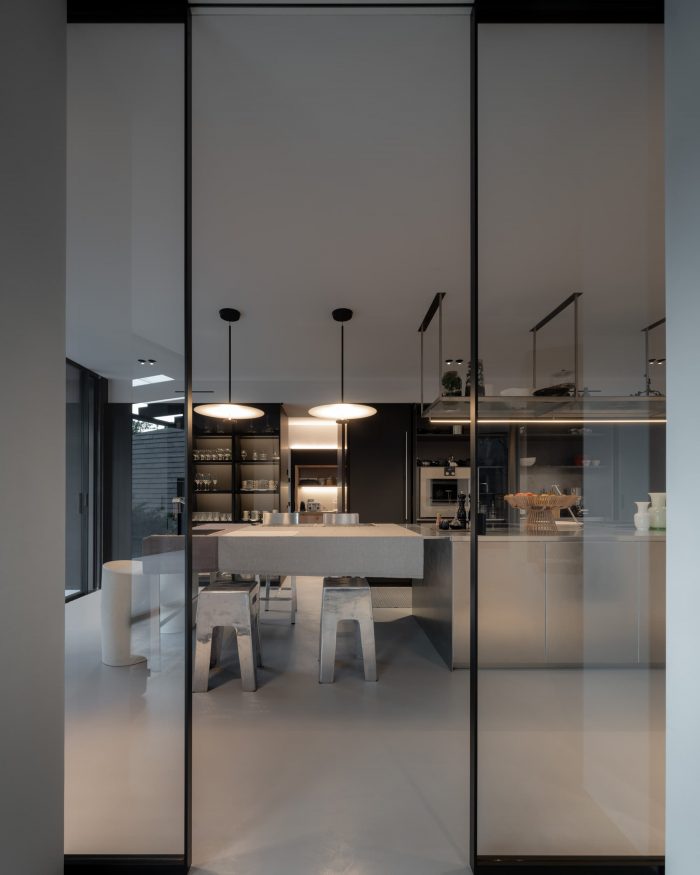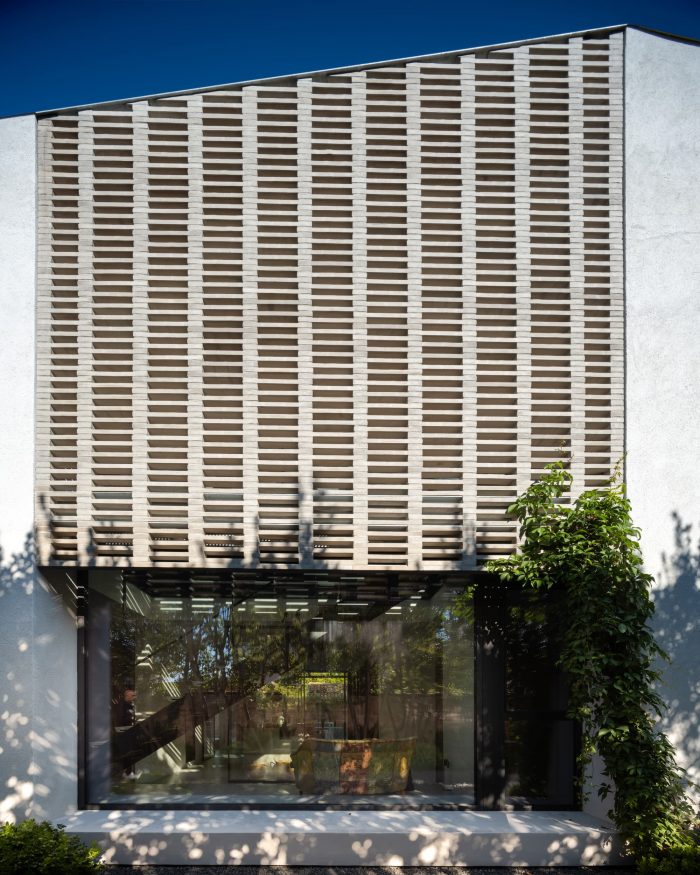该建筑诞生于19世纪中期的一栋房子,然后在90年代进行了翻新,位于特雷维索历史中心的近郊区,可以俯瞰西莱河的地段。从原有的场地开始,建筑以一种蜿蜒的方式蜿蜒其形状,直到它通过一个大的门廊征服了河流的景色,门廊打算 “框住 “河岸景观,同时通过降低外墙的高度尊重其自然性。
The building was born in the pre-existence of a house from the mid-1900s then renovated in the 90s, in a lot overlooking the Sile river, in the peri-urban area of the historic center of Treviso. Starting from the pre-existing grounds, the building winds its shape in a sinuous way until it conquers the view of the river through a large portico which intends to “frame” the riparian landscape and at the same time respect its naturalness by decreasing the height of the facade.
总之,在建筑代表的层面上,我们可以确定三个主要的主题:通过自由和明确的体积表达的形状,引导和指导用户对环境的认识;审美特征,在 “皮肤 “中表达,根据更多的城市或自然景观而变化;渗透性,在生活空间和景观之间的连续游戏中,通过大型玻璃表面、内部花园、”非物质 “墙。
In summary, on an architectural representative level, we could identify three main themes; Shape expressed through a free and explicit volume that leads and guides the user to the knowledge of the context; Aesthetic character, expressed in the ‘skin’ that changes according to the more urban or natural view; Permeability, in a continuous game between living space and landscape, through the large glass surfaces, the internal garden, a ‘dematerialized’ wall.
最初的困难是形状的追踪:从研究模型开始,屋顶的体积在现场被追踪,用绳索确定其轮廓。此外,面向河流的门廊实际上是一个超过8米的大型钢筋混凝土梁,是与工程公司合作设计的。最后,在楼梯前的大型玻璃立面的顶部,屋顶向后倾斜,以便在破损的情况下,通过从砖墙后面往上拉来改变它。
The difficulties initially were the tracing of the shape: starting from the study model, the volume of the roof was traced on site, defining its contours with the use of ropes. Furthermore, the portico facing the river is actually a large reinforced concrete beam measuring over eight meters, designed in collaboration with the engineering firm. Finally, on the top of the large glass facade in front of the staircase, the roof is set back to give the possibility to change it by pulling it upwards from behind the brick wall in case of breakage.
建筑物的结构是一个钢筋混凝土框架:有隔板和横梁。外墙包层为砖块。大窗户有三层玻璃的双层玻璃。楼层是混凝土和木头(在第一层)。面向河流的立面和屋顶用陶土瓦覆盖,有一个通风的立面系统。
The structure of the building is a reinforced concrete frame: with partitions and beams. The façade cladding is brick. The large windows have double glazing with triple glass. The floors are concrete and wood (on the first floor). The façade facing the river and the roof are covered with terracotta tiles with a ventilated façade system.
Architects: MACHINA architetti associati
Area : 400 m²
Year : 2022
Photographs :Marco Zanta
Manufacturers : Agostini Group, Fornace S.Anselmo
Lead Architects : Luca Pagano, Francesco Perissinotto, Stefano Pvato
Structure Engineers : Berizzi e Crozzolin ingegneri
Landscape : Alfrino Pasetto Agronomo
City : Treviso
Country : Italy

















































